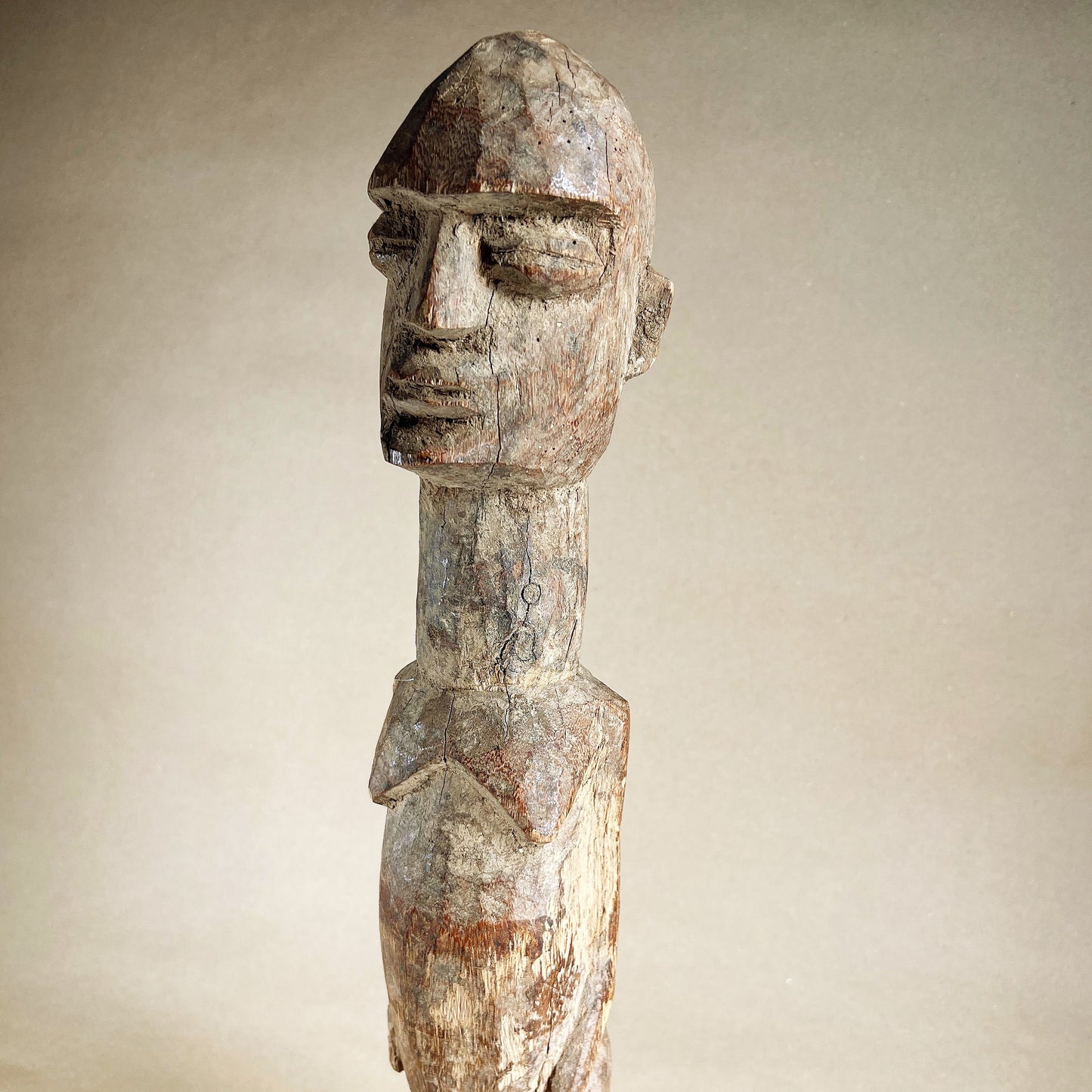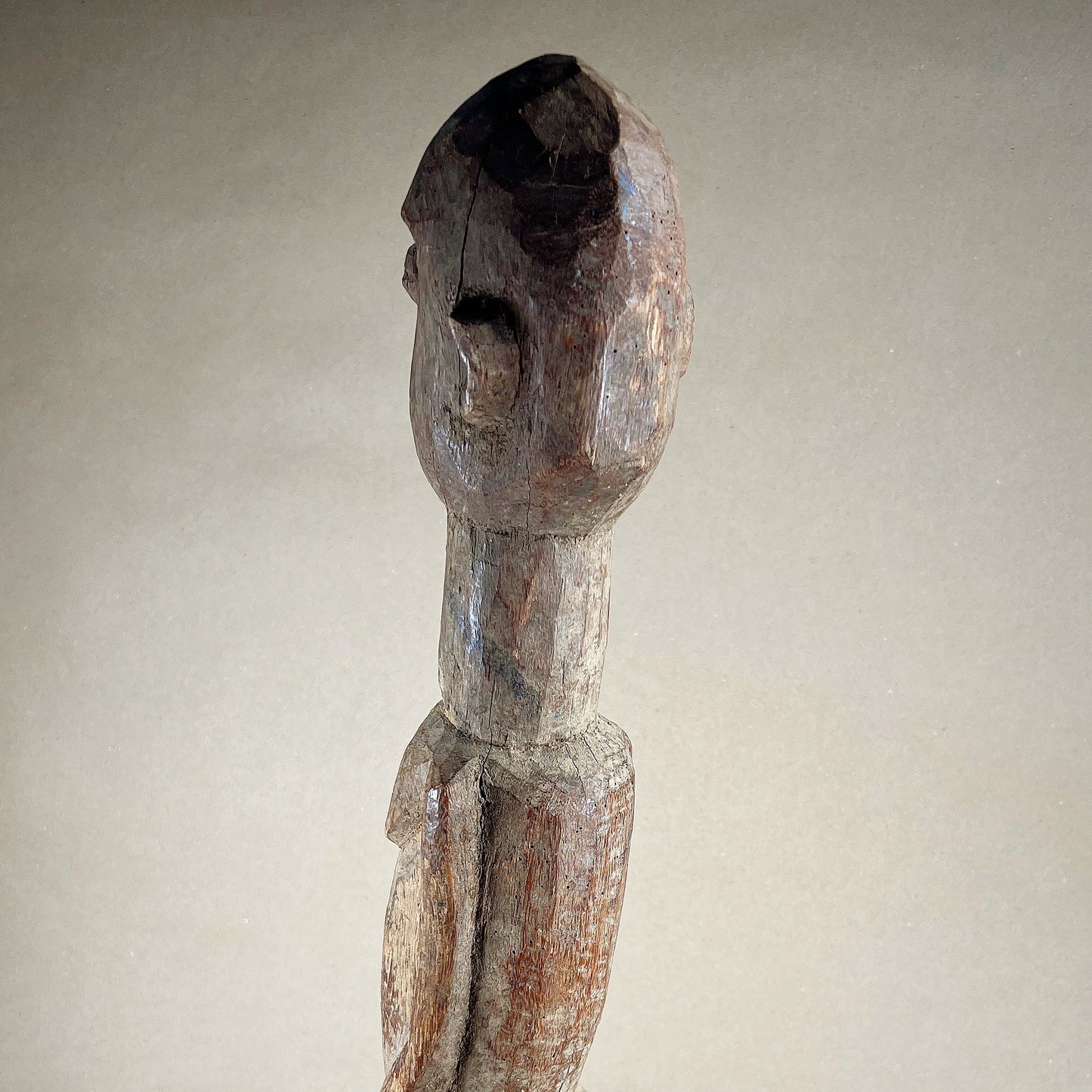Lobi Altar Figure Bateba Phuwe
Lobi Altar Figure Bateba Phuwe
Couldn't load pickup availability
Lobi people, mid. 20th century, Burkina Faso, West Africa
Impressive, older protection figure, bateba phuwe, the ordinary bateba. Used to provide the owner with general protection from witchcraft. A figure stand upright with arms against her sides. Large round head and face with wide bulging eyes. The Lobi people live mainly in Burkina Faso, with smaller groups residing in Côte d’ivoire and Ghana. Lobi is a blanket term that refers to several closely related ethnic groups. The name Lobi originates from two Lobiri (the language spoken by Lobi people) words: ”lou” (forest) and ”bi” (children), meaning literally, ”children of the forest”. The Lobi are well documented for their animist beliefs. They believe that universe was created by a central almighty god (tangba or thangba yu), under which sit a number of deities (thila, singular thil). Under these thila are the other nature spirits, spirits of the bush (kontuossi or kontuorsi), after which human beings follow. Villagers pray to thila to gain wealth, cure illnesses but more importantly, to protect themselves from witchcraft and harm. However villagers cannot directly communicate with the thila. They must make use of altar based figures called bateba (means wooden carved figure) which act as intermediaries between the human world and the spirit world of the thila. A village diviner (thildaar), interprets the will of the spirit for the community. Interaction with these spirits commonly takes place in a domestic shrine room (thilduu), village shrine (dithil), and other places in nature inhabited by spirits. Lobi bateba figures have a wide degree of style and are made for a wide range of purposes. One main category is the bateba duntundara, statues that have the power to avert evil influences and the witchcraft (apotropaic statues). These include various sub-types as well.
Gorgeous bateba figure are in good condition. Age-related heavy wear and signs of ceremonial use. Traces of libations and worm holes. Encrusted patina. Cracks, chip and fractures. Size approx. 58,5cm x 9,2cm x 8,6cm (excluding modern stand).
Provenance: Dutch private collection.
For a similar example see:
Lobi Standing Figure, Bowers Museum, Accession number: 85.24.20. (https://collections.bowers.org/objects/60911/lobi-standing-figure)
References and further reading:
Occult Conversations, or How the Thila Make the Law for the Lobi, Claude-Henri Pirat, Arts d'Afrique,Voir l'Invisible, Musée d'Aquitaine, Bordeaux, Hazan, Paris, 2011, p. 85-91. and p. 217-220.
Anonyme Schnitzer der Lobi, Floros & Sigrid Katsouros/ Stephan & Petra Herkenhoff, Published by Hannover: Ethnographika, 2006.
Lobi Traditional Art/L'art Traditionnel Lobi, Giovanni Franco Scanzi, Published by Abidjan, 1993.
Lobi, 101 Last Tribes. (https://www.101lasttribes.com/tribes/lobi.html)
Lobi Statuary and the Statuary of Related Peoples, an Example of Cult Art, Claude-Henri Pirat Tribal Arts Magazine, Paris/San Francisco, No:1, March 1994, p. 22-32.





-
Shipping
The shipment will be prepared in the course of 3-5 days and dispatched via Posti Group Oyj or purchased item(s) can be picked up from our shop during the store's opening hours (Tarkk’ampujankatu 4, 00140, Helsinki, Finland). Within the Finland, all items are shipped via Posti Group Oyj unless otherwise requested. We pack the items carefully and mainly in recycled materials because we want to save nature. You will receive the tracking number for your items by e-mail.
-
Returns
Returns and exchange will be accepted within fourteen days (14) of receipt at the purchaser’s cost to include freight and packaging. Items must be returned in the same condition as when they were shipped, and will not be accepted if damaged or altered in any way. Please inform us via email (info@gotanmaailma.fi) or by calling +358408408352 before sending. We do not accept returns more than 14 days after delivery.





